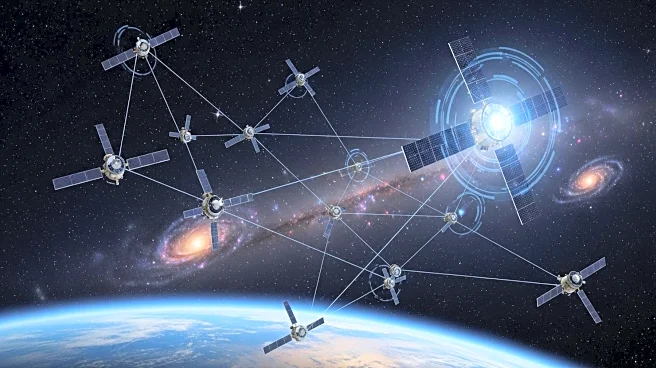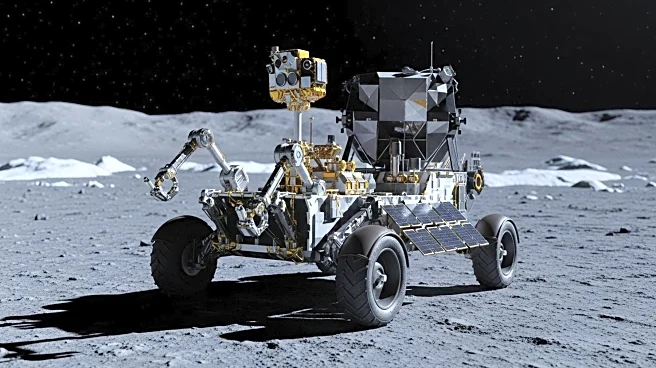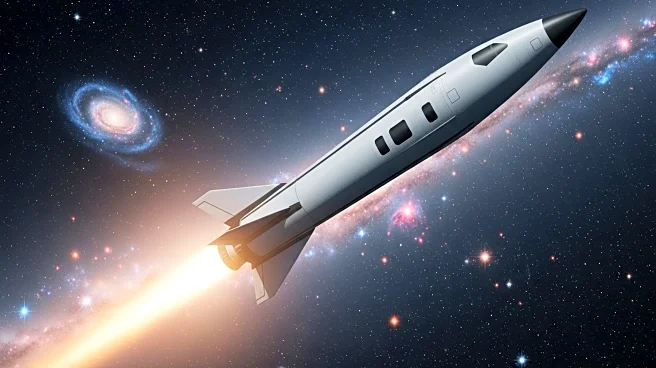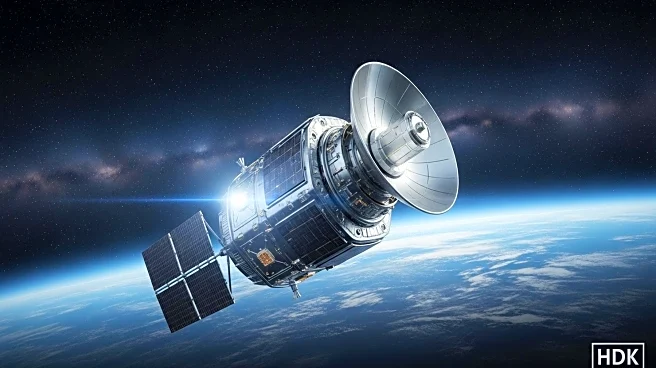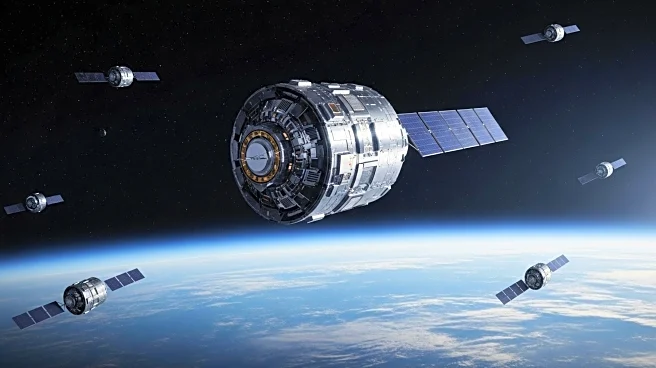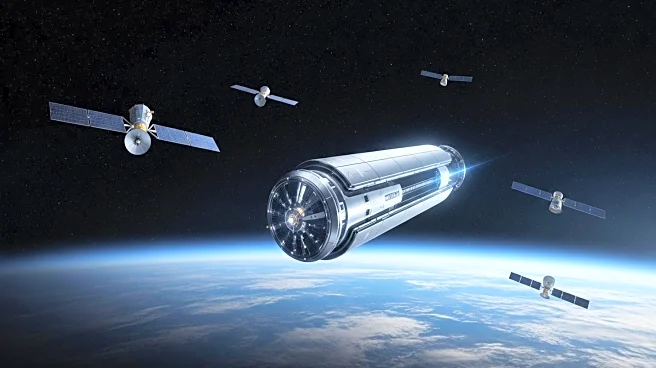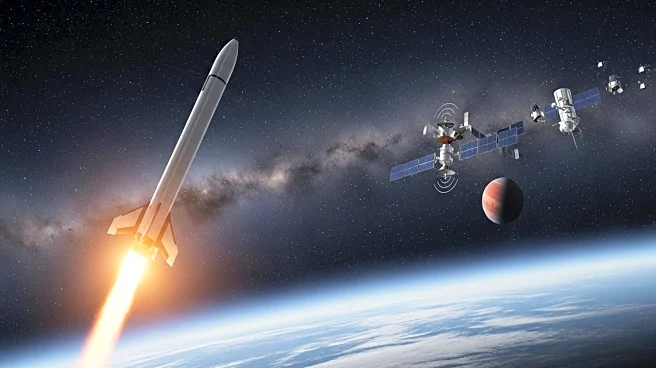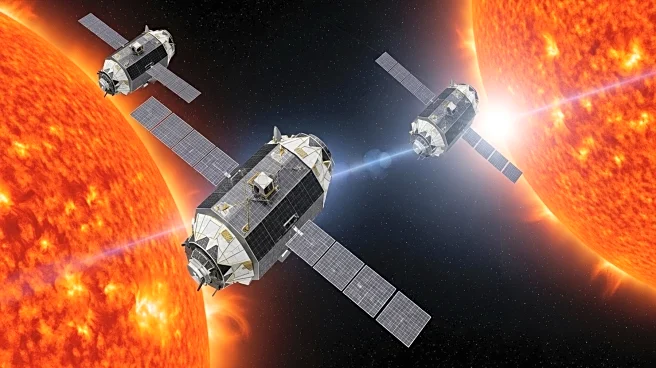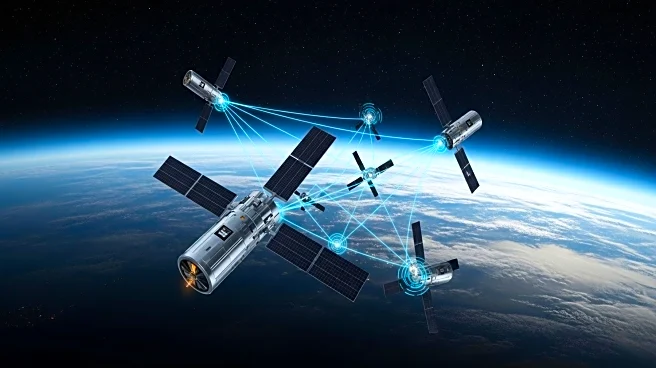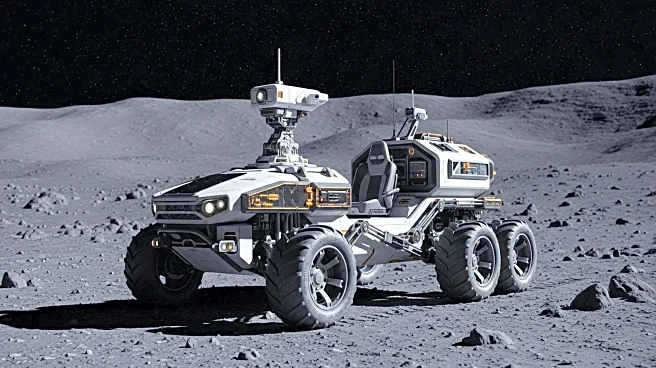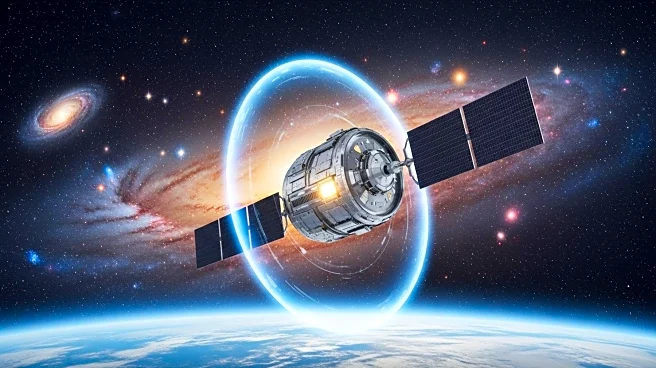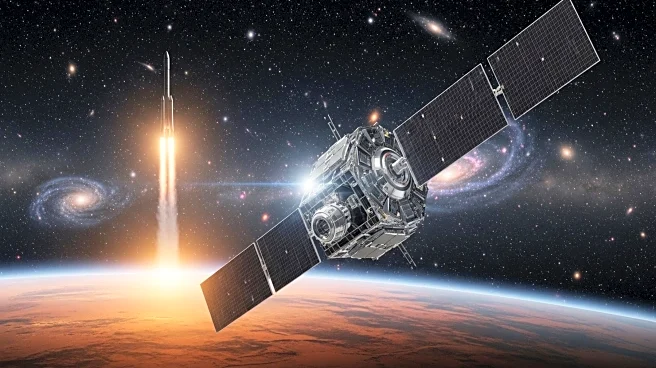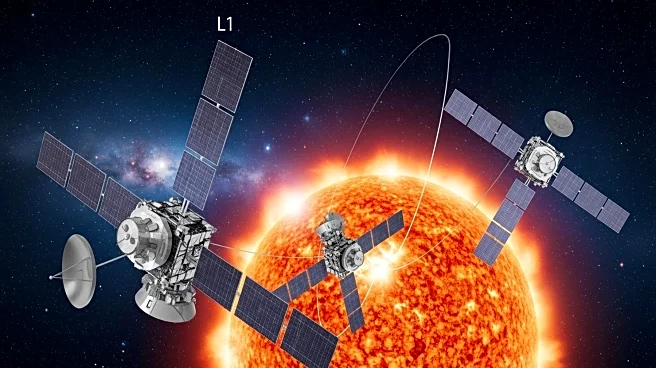What is the story about?
What's Happening?
SpaceX has launched 24 new Starlink internet satellites from California, marking its 84th Starlink mission of 2025. The Falcon 9 booster successfully landed, achieving the company's 507th rocket recovery. Additionally, SpaceX has acquired $17 billion in wireless spectrum licenses from EchoStar to expand its Starlink direct-to-cell phone service. This acquisition aims to eliminate mobile dead zones globally, enhancing coverage for customers. Meanwhile, NASA has awarded Blue Origin a contract to deliver the VIPER lunar rover to the Moon's south pole in 2027, using Blue Origin's Blue Moon lander as part of the Artemis program.
Why It's Important?
The expansion of SpaceX's Starlink network and the acquisition of wireless spectrum are significant steps in enhancing global internet connectivity, potentially transforming telecommunications by providing coverage in remote areas. This move positions SpaceX as a leader in satellite-based internet services, challenging traditional telecom providers. NASA's contract with Blue Origin underscores the growing role of private companies in space exploration, supporting long-term American presence on the lunar surface. These developments highlight the increasing collaboration between government agencies and private enterprises in advancing space technology and exploration.
What's Next?
SpaceX plans to continue its rapid launch cadence, with over 8,000 Starlink satellites launched since the program began. The company aims to upgrade to larger 'Starlink V3' satellites in 2026 to boost network capacity. Blue Origin's VIPER mission is scheduled for late 2027, aligning with NASA's broader Artemis timeline to establish a sustainable presence on the Moon. NOAA is preparing to launch a new space weather satellite on September 23 to replace aging solar sentinels, ensuring continued monitoring of solar storms that can disrupt power grids and communications.
Beyond the Headlines
The acquisition of wireless spectrum by SpaceX could lead to significant shifts in the telecommunications industry, potentially reducing reliance on traditional infrastructure and increasing competition. The collaboration between NASA and Blue Origin reflects a strategic shift towards leveraging private sector capabilities for space exploration, which may accelerate technological advancements and reduce costs. The launch of NOAA's new satellite highlights the importance of maintaining robust space weather monitoring systems to protect critical infrastructure from solar disruptions.
AI Generated Content
Do you find this article useful?
